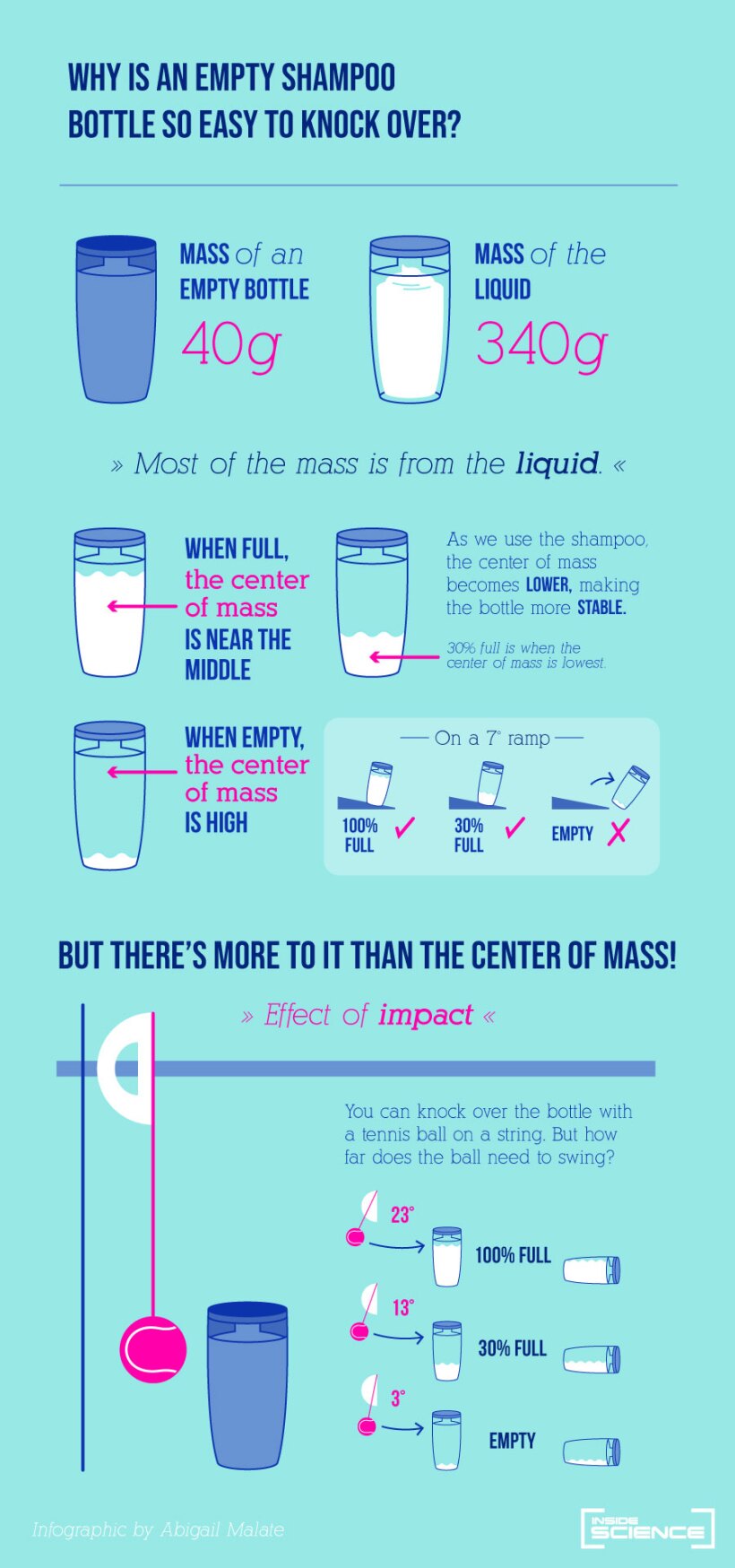Why Is an Empty Shampoo Bottle So Easy to Knock Over?

Why Is an Empty Shampoo Bottle So Easy to Knock Over? lead image
(Inside Science) -- Knocking over a shampoo bottle is an annoyance most of us have experienced, especially when the bottle is almost empty and seems to fall at the slightest nudge. In a recent article
An object with a lower center of mass is typically more difficult to tip over. This is the case when there is still enough shampoo left to weigh the bottle down. However, when a bottle of shampoo is nearly empty, the mass of the shampoo cap shifts the overall center of mass of the bottle to a higher position, making it less stable.
The authors also demonstrated what happens when a bottle is struck. In this short video
Here, we share an infographic that illustrates their discoveries. Feel free to replicate these educational physics projects at home!
Image

This infographic is based on research by Jerome Licini and Zijun Yuan.
Media credits
Abigail Malate, Staff Illustrator


